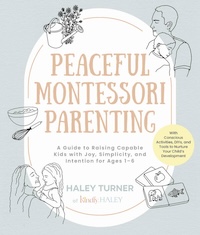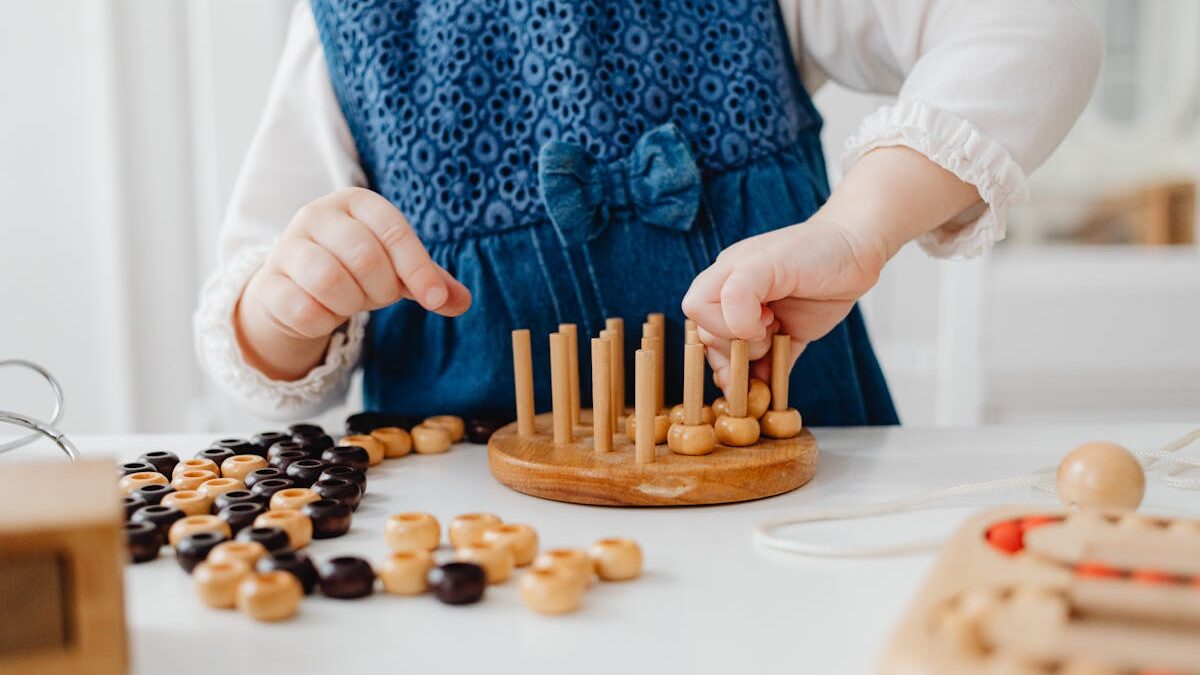Discover simple and effective Montessori sensorial activities you can recreate at home to enhance your child’s learning, fine motor skills and sensory development.
Montessori sensorial activities are designed to help children refine their senses, build cognitive skills and develop a deeper understanding of the world around them. These activities engage sight, sound, touch, taste and smell, fostering independent learning through hands-on exploration. By stimulating sensory experiences, children enhance their concentration, problem-solving abilities and fine motor skills—all essential for future academic and life success.
The good news is that you don’t need a Montessori classroom to introduce sensorial learning to your child. Many of these activities can be recreated at home with everyday household items, making them accessible and budget-friendly. Whether it’s texture matching, sound games or colour sorting, these simple yet effective exercises can provide endless opportunities for discovery and growth.
Before we share some sensorial activities inspired by Montessori principles, it’s important to understand its underlying philosophy.
What defines Montessori “work”?
In Montessori education, “work” refers to the purposeful activities children engage in to explore, learn and develop skills. Unlike traditional schooling, where work is often seen as something separate from play, Montessori work is hands-on, engaging and self-directed.
For an activity to be considered Montessori aligned, it typically adheres to a few fundamental principles. While there isn’t a strict checklist, several key elements are commonly present in Montessori-aligned work:
Hands-on and sensorial
Montessori activities are designed to be hands-on and engage the senses. Materials often have a tactile component, allowing children to explore and learn through the five senses.
Purposeful and meaningful
The activities have a clear purpose and are selected based on the developmental needs and interests of the child. Each activity is intended to foster one concept at a time. This is an easy way to spot whether a toy being advertised as “Montessori” is actually Montessori at all. For instance, those “Montessori” busy boards are quite misaligned, as there are so many concepts in just one material. The child will struggle to focus, repeat and master new skills with so many things there intended to “busy” them.
Self-directed learning
Montessori emphasises the child’s role in directing their own learning and fostering independence. The material is thoughtfully presented in a way that allows them to complete the work without an adult. You’ll usually find work in a basket or tray that contains everything needed.
Control of error
The principle of “control of error” serves as a key feature within learning materials. It functions as a discreet mechanism embedded in these materials, allowing children to autonomously identify and remedy their own mistakes.
Imagine a child immersed in a Montessori work, whether arranging the pink tower or manipulating geometric shapes. Within these materials lies a deliberate design where errors in the child’s work are visibly evident, eliminating the constant need for adult intervention. The child, upon recognising a mistake, takes the initiative to correct it independently.
Beyond serving as a corrective tool, control of error embodies a profound aspect of self-reflection, encouraging children to learn from both successful outcomes and missteps. This is a foundational principle in Montessori education, nurturing independence, building confidence and instilling a genuine passion for the learning process from the earliest stages of education. As a Montessori guide, we’re able to let the material “correct” the child rather than having to take on that role ourselves.
Promotes focus
Montessori work builds interest in a way that invites the child to repeat the work over and over again. Through repetition, the child is on their way to mastery of new skills and concepts, while honouring their individual pace.
Principles, not checklist
While these elements are often present in Montessori-aligned activities, it’s essential to note that the true essence of Montessori lies in understanding and embodying the principles rather than adhering to a rigid checklist. The philosophy is flexible and adaptable to various cultural and educational contexts while staying true to the core values of respecting the child and supporting their natural development.
Maria Montessori created didactic learning materials, but she didn’t make toys. So, any toys you see advertised as Montessori that fit into these guidelines would be “Montessori-aligned” toys, not “Montessori”. Just helpful to know.
Also, a note on fantasy play. Montessori emphasises the importance of grounding children in reality to help them first understand and navigate the world around them before engaging in fantasy play. Why is this? Until around age five or six, children have a lot of difficulty distinguishing between “real” and fantasy, which makes it very confusing and often scary for them. While we respect their forms of play and imagination, we’re honest about what’s real or not real, while limiting their exposure to fantasy.
Montessori sensorial activities and schemas
Though not traditionally Montessori, the concept of “schemas” is aligned to the philosophy. Schemas are repetitive patterns of behaviour that children engage in during early childhood, typically between the ages of one and six. These behaviours reflect the child’s efforts to make sense of the world around them and to explore and understand concepts and ideas.
Here are some common schemas observed in early childhood, along with examples of activities that support each schema:
Transporting
Children are fascinated with moving objects from one place to another.
- Provide baskets or containers for children to carry objects around.
- Set up toy vehicles or doll strollers for children to push around the room.
- Offer materials for building structures that can be moved from one location to another.
Rotation
Children enjoy spinning objects or themselves, as well as twisting and turning things.
- Provide tops, spinning toys or fidget spinners for children to explore rotation.
- Offer materials for children to twist and turn, such as pipe cleaners or clay.
- Create opportunities for children to experiment with rotating objects in water or sand.
Trajectory
Children are interested in the path or trajectory of objects, such as throwing, dropping or rolling.
- Provide balls or bean bags for children to throw into targets or containers.
- Set up ramps or slides for children to roll objects down.
- Provide water play—children enjoy pouring and dumping water, and sitting in the tub as it fills up to enjoy the running water from the faucet.
- Offer materials for children to experiment with dropping objects from different heights.
Connecting
Children are interested in joining objects together or connecting parts.
- Provide building blocks, magnetic tiles or construction toys for children to connect and build with.
- Offer materials for children to string together, such as beads or pasta.
- Create opportunities for children to explore puzzles or interlocking toys.
Transforming
Children enjoy changing the form or appearance of objects through manipulation or construction.
- Provide materials for open-ended art activities, such as clay, paint or collage materials.
- Offer loose parts or found objects for children to use in creative construction projects.
- Create opportunities for children to experiment with pouring, mixing or moulding materials like sand, water or dough.
Read next: Fun and educational activities for toddlers

Extracted from Peaceful Montessori Parenting by Haley Turner.
How helpful was this article?
Click on a star to rate it!
5 / 5. 1
Be the first to rate this post!
Haley Turner
Related posts
Subscribe
Receive personalised articles from experts and wellness inspiration weekly!

